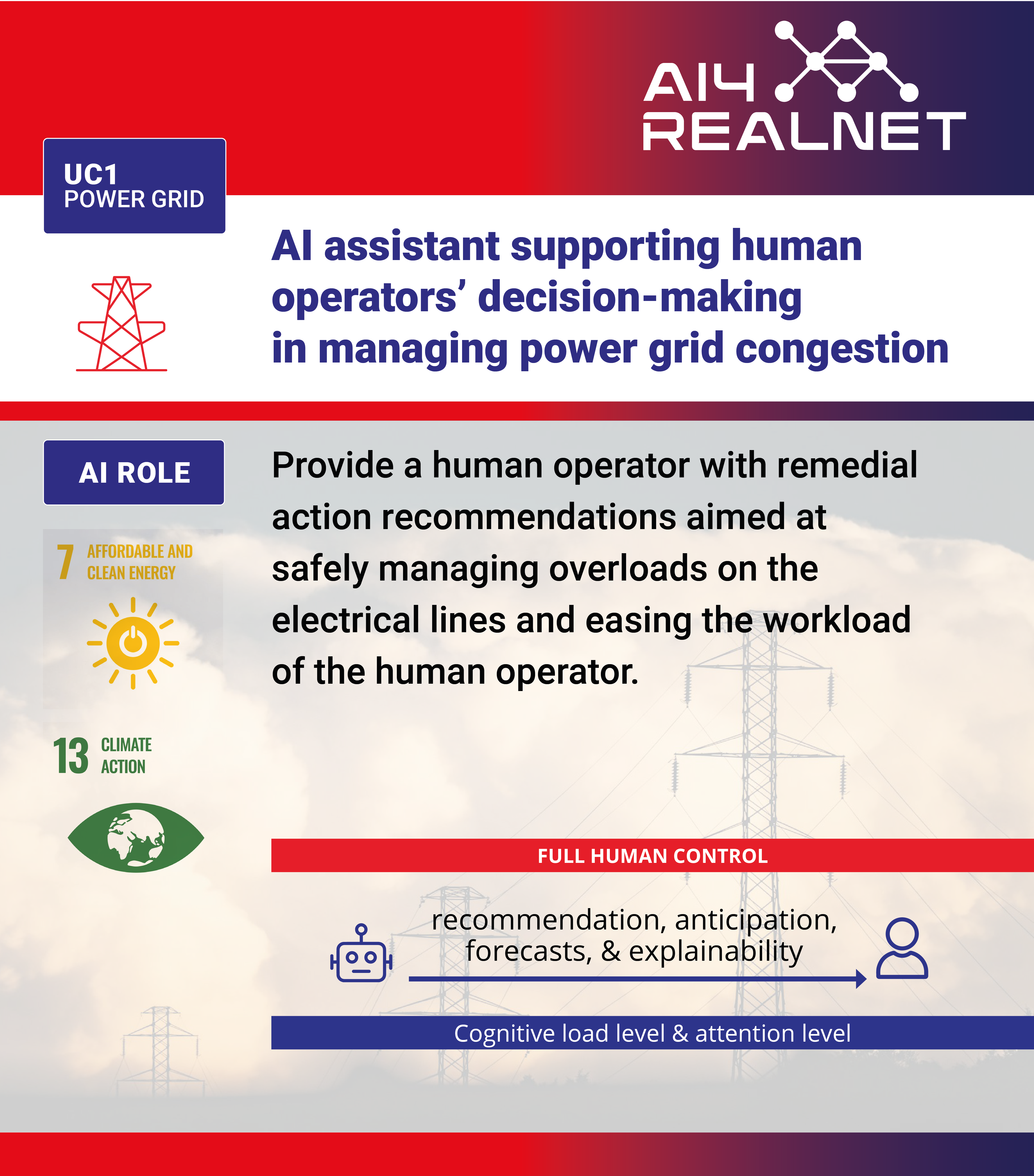Electricity Network Use Case 1
AI assistant supporting human operators’ decision-making in managing power grid congestion
Context and motivation: Electricity networks are transforming as the ongoing decarbonisation and digitalisation introduce clean generation technologies, electrify demand, enable demand-side flexibility, and digitise and/or add new devices. This directly impacts supervision systems in control rooms, which have grown unreasonably to remain cognitively manageable. Networks are also ageing, and infrastructure developments are more limited but integrate more automata. AI can help to address more numerous, complex, and coordinated decisions, increasing uncertainty, overcrowded and fragmented work environments with multi-screen applications, and increasing human operator cognitive load.
Problem formulation: The AI assistant oversees the transmission grid, using SCADA data and Energy Management System tools to identify issues and categorise them for human intervention. It monitors power flows, adhering to defined operational conditions. Anticipating problems, it sends alerts to the operator with confidence levels, avoiding excessive alerts to maintain operator focus. Action recommendations include topological changes, re-dispatching, and renewable energy curtailment. The human operator selects an action or seeks more information, exploring alternatives. After the operator’s decision, the AI assistant provides feedback through load flow calculations and logs decisions for continuous learning and interaction improvement.
Stakeholders: Transmission system operators, human operators, transmission grid users, and electricity market participants.
Threats and vulnerabilities: Adversarial data attacks; trust from human operators; mismatch between AI training and deployment; dependency on external systems (forecasting, SCADA measurements).
Key benefits: Minimise operational costs; facilitate energy transition by reducing renewable energy curtailment and improving carbon intensity of actions; reduce the workload of the human operator; increase resilience to extreme (natural and man-made) events).
Download the Use Case file to see the complete description!
